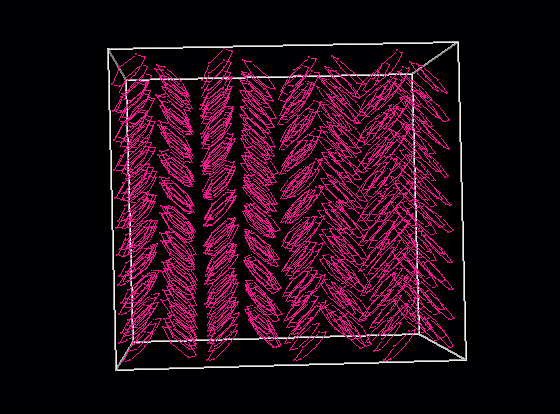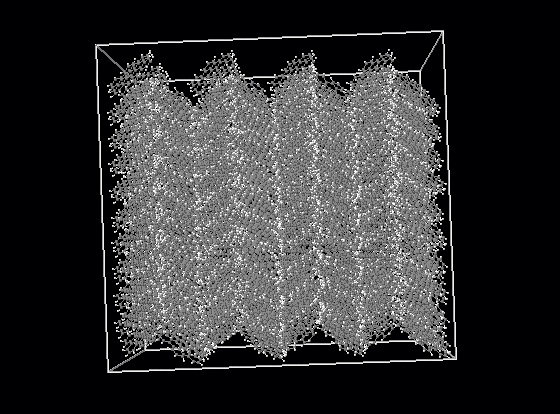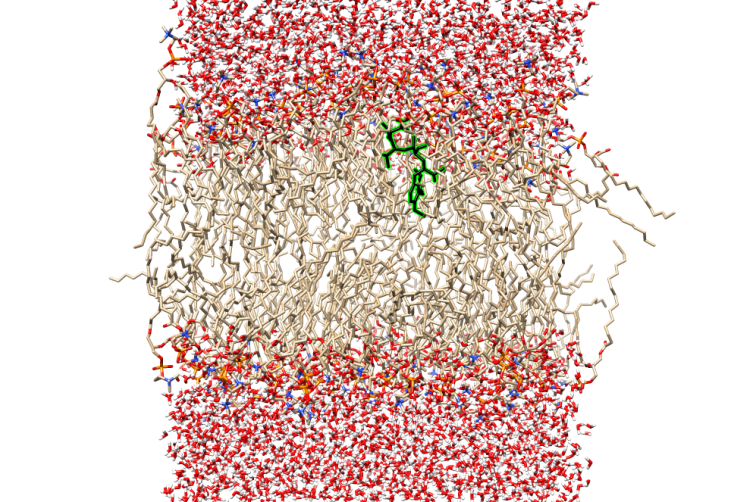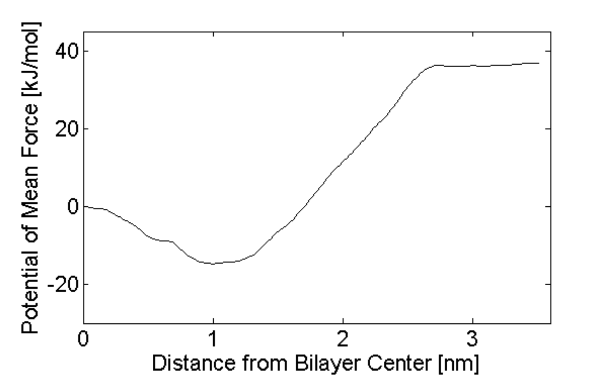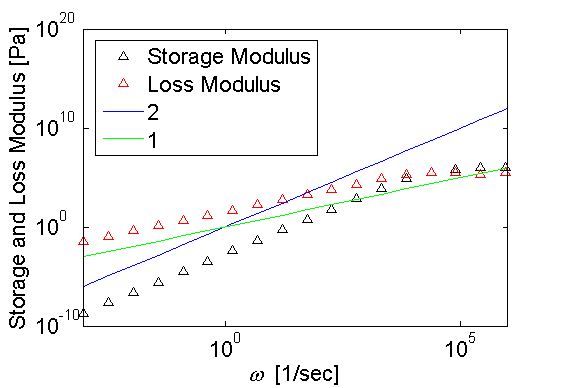 |
National Technical University of Athens School of Chemical Engineering Department of Materials Science and Engineering Computational Materials Science and Engineering Group (Co.M.S.E.) |
| News 2 December 2025 We are delighted to announce the release of Multiscale Modelling of Polymers by D. N. Theodorou and V. G. Mavrantzas, published in the Oxford Series on Materials Modelling. Click here for the more details. 1 December 2025 The Online Training Workshop on Computational Materials Science 2025 (CMS25) will take place on 13-14 December via ZOOM. Organized by the National Hellenic Research Foundation under the auspices of EEETSY. Click here for the more details. 10 November 2025 A PhD program titled "Molecular Modeling of Sustainable Heat Batteries (RecyWax+)" is available in the group of Profs. Alexey Lyulin, Heiner Friedrich, and Henk Huinink (TU/e), in collaboration with Prof. Bernard Geurts (University of Twente). Click here for the more details. 30 June 2025 A PhD program with title "PhD Program in Process and Product Engineering" is available in the group of Profs. Giovanni Ianniruberto and Pino Marrucci at the Universita di Napoli. Click here for the more details. Click here for the more details. 12 June 2025 The European Materials Informatics Network (EUMINe) invites students/scientists in the field of materials science to participate in the upcoming EUMINe Training School which will take place on 19-20 June 2025 at the Alex Castella Hotel in Piraeus, Greece. Click here for the more details. 31 March 2025 We would like to invite you to our group's next meeting, which will take place next Tuesday, April 1st, at 14:00, in the "N. Koumoutsou" room of the School of Chemical Engineering, NTUA. Professor Theodoros Karakasidis, Chairman of the Department of Physics at the University of Thessaly, will discuss an extremely interesting and timely topic, namely the prediction of material properties using machine learning methods. Click here for the abstract of the presentation. 9 May 2024 A summer school/Workshop is organized by the Department of Mathematics of the University of the Aegean, in cooperation with the Hellenic Society of Rheology (HSR). Τhe event is open to all M.Sc. and Ph.D. students, post-docs, scientists and engineers conducting research or interested in the field of rheology and fluid mechanics. The program will consist of 6 short courses, invited lectures, a poster session and a limited number of oral presentations. All topics in theoretical, computational, and experimental rheology are welcome. Click here for more information. 28 March 2024 The Chemical Engineering department of the Technical University of Denmark (DTU) is seeking a motivated PhD student who is willing to be part of a world-leading research environment and contribute to the development of thermodynamic models and algorithms for electrolyte solutions. The appointment of this PhD position will be at the Center for Energy Resources Engineering (CERE), Department of Chemical and Biochemical Engineering. Click here for more information. PhD and Postdoctoral opportunities in Applied Knot Theory at ASU. Click here for more information. 6 December 2023 PhD and Postdoctoral opportunities in Applied Knot Theory at ASU. Click here for more information. 20 November 2023 Two PhD positions are available within the framework of the European Network "ReBond". Click here and here for more information. 19 September 2023 PhD position available in Computational Chemistry/Polymers Degradation funded by PlasticUnderground Marie Curie ITN. Click here for more information. 2 September 2023 Masters, PhD, Postdoctoral and Project-Manager positions are available at FORTH-IESL in the field of Synthesis, Experiments and Modelling/Simulations of Soft Matter systems (with emphasis in Polymers and Colloids) for Green and sustainable applications. Click here for more information. 2 September 2023 A PhD position on molecular-dynamics simulations of thermomechanical behaviour of epoxy-copper interfaces is available starting from January 2024 in the Soft Matter and Biological Physics (SMB) group of the Applied Physics department of TU/e. The project will be supervised by prof. dr. Alexey Lyulin. Click here for more information. 12 June 2023 On Friday, the 7th of July, 2023, two distinguished professors from the USA will visit the Computational Materials Science and Engineering (CoMSE) group at NTUA: Professor Bradley Chmelka (Department of Chemical Engineering, University of California, Santa Barbara) and Professor Eleni Panagiotou (School of Mathematical and Statistical Sciences, Arizona State University). In the context of their visit they will give lectures on their research work, with the following titles: Prof. Bradley Chmelka; Compositional and structural order at inorganic-organic interfaces. Prof. Eleni Panagiotou; Novel topological metrics of entanglement in polymers. The lectures will be given in the Koumoutsos room of the School of Chemical Engineering at NTU Athens, starting at 14:00. Click here for more information. 25 April 2023 The 2023 European Conference on Computational and Theoretical Chemistry, co-organized by the Greek Chemists Association and the Division of Computational and Theoretical Chemistry of the European Chemical Society will be held in Thessaloniki, 27-31 August 2023. Click here for more information. Read all news... |
Multiscale Simulation of Liquid-Crystals, Polymer Melts and Rubbers Multiscale modeling is a valuable tool for the study of phenomena taking place at different time and length scales and is able to contribute complementary information to experiments and theories. Liquid crystals exhibit a number of intermediate phases between the isotropic and crystalline ones. From a general point of view, they can be divided into thermotropic and lyotropic liquid-crystals, depending on whether the liquid-crystalline phase appears due to a change of temperature or in the concentration of a solvent, respectively. The first category contains either rod-like or disk-shaped molecules, whereas the second category includes at least two-component systems, such as lipid bilayers (e.g DPPC membrane). Both thermotropic and lyotropic liquid crystals are included in the research interests of COMSE group. We simulate these systems at atomistic and mesoscopic levels, paying special attention to the coarse-graining procedure, which is based on a systematic method (e.g Iterative Boltzmann Inversion or Force Matching). After the development of reliable mesoscopic models, we study structural, dynamical and thermodynamic properties. In the area of lipid bilayers, interactions with other molecules (e.g drugs) are of tremendous importance. Our group is conducting both molecular dynamics simulations and umbrella sampling simulations by employing the wham algorithm. Another area of research is the computation of rheological properties of polymer melts and mechanical properties of rubbers. Due to the nature of polymeric systems, atomistic simulations are not able to cover the needed time and length scales and therefore we have to resort to appropriate mesoscopic models. One approach is to use Brownian dynamics, while the entanglement effect is introduced through hopping/creation/destruction of slip-springs based on a kinetic Monte Carlo scheme. In order to simulate uniaxial elongation of rubbers, a deformation scheme has been developed, based on imposing the strain and Poisson's ratio and measuring the stresses along the elongation direction. The stress-strain curve of the simulated material is obtained from this procedure and the elastic modulus (E) is computed from the slope of the linear region of this curve. 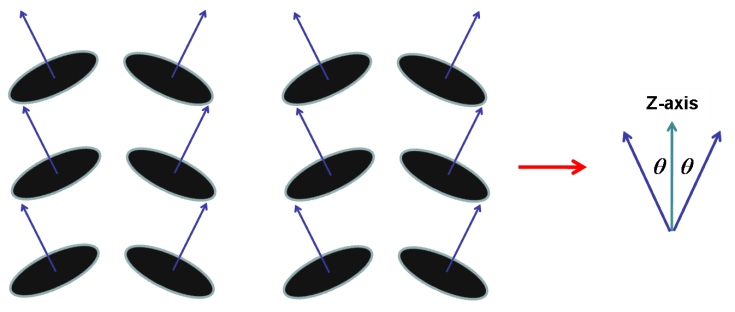 Figure 1: Snapshot from a molecular dynamics simulation of a discotic liquid crystal at mesoscopic level.
Figure 3: (a) Schematic representation of a hydrated lipid bilayer containing one drug molecule. (b) Potential of mean force for a drug along a selected reaction coordinate of the lipid bilayer using the wham algorithm. (figure provided by Grigorios Megariotis in the context of the publication: Fotakis, C.; Megariotis, G.; Christodouleas, D.; Kristi, E.; Zoumpoulakis, P.; Ntoutaniotis, D.; Zervou, M.; Potamitis, C.; Hodzic, A.; Pabst, G.; Rappolt, M.; Mali, G.; Baldus, J.; Glaubitz, C.; Papadopoulos, M. G.; Afantitis, A.; Melagraki, G.; Mavromoustakos, T. Biochimica et Biophysica Acta-Biomembranes 2012, 1818, 3107.[REF])  Figure 4: (a) Visualisation of a simulation box containing polymeric chains at the level of Kuhn segments (obtained from Field Theory Inspired Monte Carlo simulation). (b) Visualization of the simulation box containing polymeric chains at the level of beads, each bead consisting of a predefined number of Kuhn segments (coarse-graining of (a)).
Figure 5: (a) Stress relaxation function of a cis-1,4 polyisoprene melt computed by a Brownian dynamics simulation coupled with a kinetic Monte Carlo scheme for the hopping of slip-springs (used for the inclusion of entanglement effect). (b) Loss and storage moduli computed by a Fourier Transform of the stress relaxation function. Relevant publications
Relevant projects
|
|
 |
 |
 |

| Computational Materials Science and Engineering Group Department of Materials Science and Engineering School of Chemical Engineering, National Technical University 9 Heroon Polytechniou Street, Zografou Campus, 15780, Athens, Greece Tel. +30 210 772 3216, Fax +30 210 772 3112 Webmaster: comse.chemeng.ntua@gmail.com |
Copyright © 2023 - All rights reserved |
